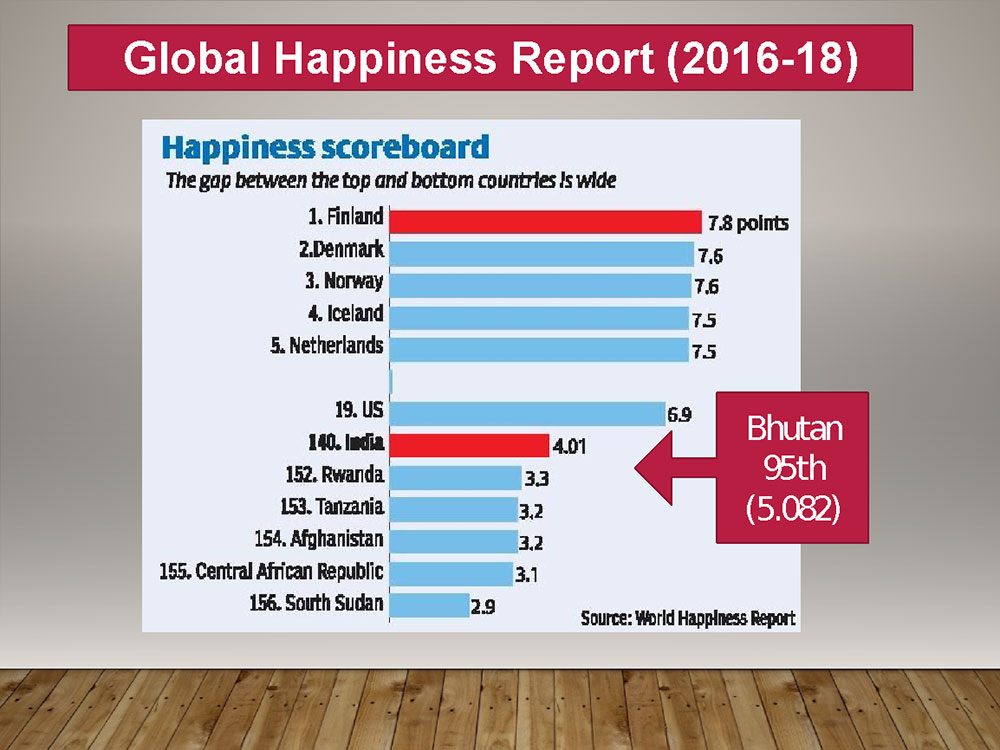How the fallacy of a social myth could lead to a culture of mediocrity rather than meritocracy?
“The core impediments against the development of a more professional and efficient bureaucracy remain entrenched in the system. So we must also have the audacity to equally acknowledge them in preparing for the future.”
His Majesty, the King, in His Royal Address on 113th National Day, pointed out one of the main impediments to success in our society. We are not willing to tell the truth and offend others. We want to keep everybody happy. This stems from our laidback approach and reluctance to speak up and confront others. We seem to close our eyes and put things under the carpet even when it means losses to the public or the self. This seems to have its root from our understanding or rather our misunderstanding of the concept of the “middle path” and hence the wrong application of the law of mathematical average in the social domain.
The concept of the middle path in Buddhist teachings is very popular. People generally understand it as a balanced approach to things and avoiding extreme cases. However, this seems to lead to complacency in management when people set their goals and objectives. People seem to compromise even their goals because of the middle path. This eventually leads to mediocrity and complacency. The other collateral damage from this mindset is the notion that the middle path leads to peace and harmony in society. Therefore, people shy away from being competitive and being assertive, traits that are extremely important in modern-day management in getting things done.
In the STEM language, the middle path is close to the concept of the average of any two numbers, which we see is surprisingly playing out in the social domain in the land of GNH. This is most glaringly noticeable when it comes to the results of the Global Happiness Report (2016-108) where Bhutan occupies almost the middle position of (95 out of 156 countries) with an exact middle score (5.082 out of 10.00 – shown in the image).
This is not because we are an unhappy society but rather the manner in which we may have been influenced by our misinterpretation of the middle path. We may have tried to be modest or moderate in our response to the survey. For instance, a typical question of “how happy are you?” will elicit an entirely different response from an American as compared to that from a Bhutanese. An extrovert American will have no hesitation in claiming right away that he is “GOOD” whereas a Bhutanese will shyly admit that “he is surviving; that the water is not dry and that the fish is still alive” and hence Bhutan’s middle and the mediocre position in the happiness ranking.
While there is a profound level of the concept of middle path in sacred Buddhist volumes referred to as the “Uma Lam”, the most simple origin of the middle path concept in the day to day life context goes way back to when Buddha was just like one of us, before enlightenment. It specifically refers to the time when he tried to lead a life of asceticism almost starving to death and discovered that the best way to continue his practice is actually avoiding such extremes. One should neither overindulge in gratification nor in self-mortification. Therefore, for our understanding, it can be seen as an approach towards a balanced dietary and nutrition approach which currently is a $500 billion global industry.
On the other hand, when it comes to goal and objective, Buddha’s ultimate goal on liberation and nirvana seems to be quite clear, fixed and sacred without any compromise. In fact the state of “bardo”, when someone is neither here nor there, is something that is to be avoided. We all know and practice this when it comes to small actionable objectives; like counting our beads, doing choeten circumambulations, and also advising our students and children to shoot closer to 100% rather than the middle 50% in their exam. However, we seem to relax when it comes to higher collective goals and vision for the organization or the nation. The key takeaway then is that a middle path is a flexible approach but it is not to be confused with our goal.
As far as the profound “Uma Lam” (the Uma or the middle path) is concerned, I understand that this is the unwavering path of forging ahead without fear or favour once we have determined our true purpose – which is for the benefit of the nation. Far from championing the idea of moderation and avoiding extreme cases, it is actually the notion of raising the tough questions and telling the truth, even though it might be hurtful to some. Far from being advocating peace and harmony at all costs, it calls on us to confront the real issues and the impediments to our collective progress. Far from settling for mediocrity, it defines how we need to structure our society- one that is based on hierarchy and dominance purely on merit and values.
Just ask yourself, when you feel sick would you rather go to a doctor who has proven his expertise and merit or would you settle for a mediocre doctor who is also a close relative? Therefore, the interpretation of the concept of the middle path in our management practices is not to settle for complacency and mediocrity but to make the right decision for the benefit of the nation, no matter how hard and extreme it is.
Just like Buddha had set the uncompromising lofty goal of total liberation, His Majesty, the King has also shown us a clear vision for the nation. Now all of us must have the audacity to confront the hard questions that were necessary and achieve the vision no matter what instead of settling for moderation. This is the true sense of the perfection of the profound “Uma Lam”.
Contributed by
Kinga Tshering,
Thimphu


